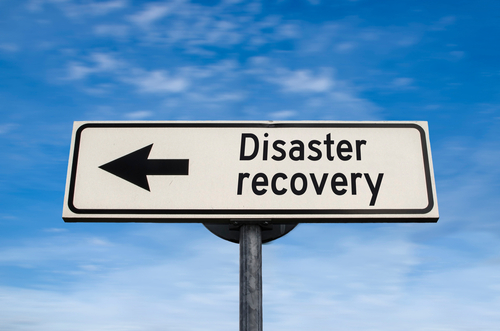In any business, people focus on components that bring longevity and stability. Organizations may secure their resources and ensure a smooth transition during a disruption by implementing an effective business continuity and disaster recovery strategy. However, it’s hard to plan for every possible scenario, like natural catastrophes, fires, cyberattacks, etc.

Unfortunately, many business owners are unbothered about implementing such strategies, putting their employees, customers, and operations at risk.
Why Effective Risk Management Strategies Are Crucial
By developing business continuity and disaster recovery plans, a business reduces its risk and minimizes the loss of vital assets in the event of a disaster.
Businesses can quickly transition from a disaster to a continuity of operations with the support of various strategies, depending on the situation. It prevents enterprises from incurring costly downtime charges. Naturally, strategies vary depending on the disaster being addressed, with immediate, intermediate, and long-term responses. But it must address the operational priorities of an organization.
Key Strategies for Facilities Management
Facilities management plays a vital role in ensuring business continuity and disaster recovery. By implementing specific strategies tailored to a facility’s needs, organizations can minimize the impact of potential disruptions. Here are some key preventive measures that businesses can use to protect their facilities and operations:
- Site Selection and Redundancy Planning: When selecting a facility location, businesses should consider the potential risks associated with the area. Assessing factors such as proximity to flood-prone areas, seismic zones, or other high-risk regions can inform decision-making. Redundancy planning involves identifying alternate sites or backup facilities in case the primary facility becomes inaccessible or damaged. This ensures that essential operations can continue without major interruptions.
- Robust Infrastructure and Equipment: Facilities should have resilient and reliable equipment to withstand potential disruptions. This includes backup power systems, such as uninterruptible power supply (UPS) units or generators, to mitigate the impact of power outages. Redundant HVAC systems can help maintain a suitable environment within the facility, even during adverse conditions. Regular maintenance and inspections of critical systems are essential to proactively identify and address any vulnerabilities.
- Emergency Response and Evacuation Plans: Developing comprehensive emergency response and evacuation plans is vital for facilities management. These plans should outline clear protocols for responding to fires, chemical spills, or natural disasters. Designating emergency exits and assembly points and establishing communication channels for alerting employees and emergency responders are crucial steps. Regular drills and training sessions should be conducted to ensure that all occupants are familiar with the procedures and can respond effectively during a crisis.
- Data Center Redundancy: Implementing redundancy measures is crucial for facilities with data centers or critical IT infrastructure. This can include backup servers, data replication, or cloud-based storage solutions to ensure data availability and minimize the risk of data loss during a disaster.
- Physical Security Measures: Facilities managers should prioritize physical security to protect the facility and its occupants. Implementing access control systems, surveillance cameras, and alarm systems can deter unauthorized access and help identify potential security threats. Regular security audits and assessments should be conducted to identify and address vulnerabilities promptly.
- Supply Chain Resilience: Facilities depend on a complex network of suppliers and vendors. To maintain business continuity, facilities managers should establish relationships with reliable suppliers and develop contingency plans to address any disruptions in the supply chain. This can involve identifying alternative suppliers, maintaining buffer stocks of critical materials, or diversifying sourcing locations.
By integrating these strategies into facilities management practices, businesses can enhance their overall resilience and minimize the impact of potential disruptions. Regular review, testing, and plan updates ensure their effectiveness over time. Effective risk management and business continuity planning is crucial for safeguarding the facility, its occupants, and the organization’s operations.
One example of successful implementation of these strategies is a Texas-based internet marketing agency that received recognition with glass awards for its outstanding disaster recovery efforts. The agency’s office was destroyed beyond repair when Hurricane Harvey hit. However, the agency could quickly transition operations and prevent data loss due to its robust business continuity and disaster recovery plans, including off-site data storage and remote working capabilities. The recognition they received with glass awards highlighted the effectiveness of their strategies and the importance of implementing comprehensive plans in facilities management.
Mike Szczesny is the owner and vice president of EDCO Awards & Specialties, a dedicated supplier of employee recognition products like glass awards, branded merchandise, and athletic awards.
